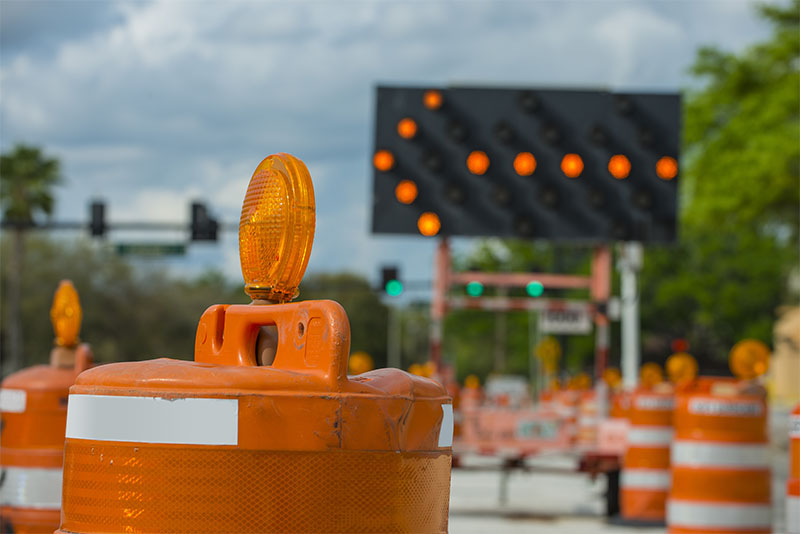
Traffic Control Plans
Traffic control plans, or TCP, are designed to permit a contractor to work within the public right of way, both efficiently and effectively, as well as safely.
Maintaining a uniform flow of traffic is a necessity in as much as possible at all times. The public traveling through the work zones in vehicles, on bicycles, as well as pedestrians, must all be given consideration when developing a control plan.
There are some typical elements for traffic control plans and some guidelines to follow when submitting one. There are elements that should be incorporated into any traffic control plan in order to speed up the review process and also to avoid having to resubmit the plans after the review has taken place.
- A clear and accurate view of the streets and intersections where the traffic control plan is to take place should be stated. This should include the following: street names, traffic signals, lane configurations, and any channelization devices such as crosswalks.
- The active work area should be clearly indicated and the proposed temporary channelization devices should be set up.
- A legend indicating symbols used to represent various traffic control device elements should be included.
- The temporary signage to be used should be clearly indicated. The signs should also be marked with their appropriate codes and include the size and color of each sign. Using both a sign image and also the sign code will help to clarify the sign to be used.
- The plan should clearly indicate sign spacing and may use a chart to show the various distances.
- A spacing chart for all channelization devices should also be included.
- Transition and taper lengths should be clearly indicated.
- Label buffer lengths should be included in the plan.
- Special warning signs for motorcycles should be used if any of the following condition exist: grooved pavement, abrupt land edge, steel plates, or loose material such as gravel or dirt.
- Approved work hours should be clearly indicated. Typical work hours may include 9am-3pm on week days.
- A minimum of 11’ lanes should be maintained and indicated within the traffic control plan.
A traffic control plan is required of any work to be completed within the public right of way. Data on the traffic control plan will vary depending upon the complexity of the project. The volume of traffic that will be affected is another factor that must be taken into account, as well as the roadway geometrics where the construction is to be performed. The TCP must clearly depict the construction that will be performed, the sequence of said construction, and the travel way that will be used by all movements of traffic during each phase of the construction.
If there are to be multiple phases of construction, then each phase will require a separate and complete traffic control plan. All the basic elements of each TCP should be included and made clear to the reviewers and implementer in the field. The documents should be readily available for review and clarification at any time.
Traffic control plans that do not include the appropriate elements as listed, will be returned as incomplete and may be resubmitted after revision. It is important to note that each traffic control plan must be developed specifically for the actual work zone location.
Precision Highway Contractors, Inc. has worked so hard to be known as one of the best contractors for guardrail, signing and traffic control in our area. That has been our mission from the beginning and will always remain as such. We will always remember our grass roots and where we came from while focusing on the future. Take a look at our Traffic Control Services today.
